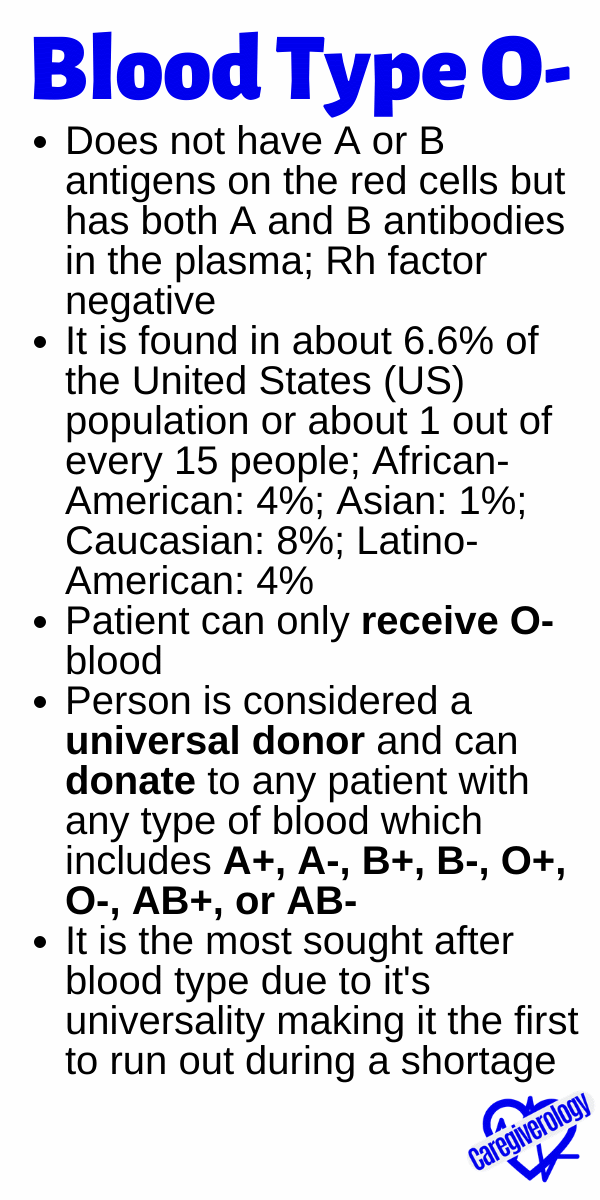
Broken down by race, type O-’s prevalence is 37% among Caucasians, 47% among African Americans, 39% among Asians, and 53% among Latino-Americans, according to the American Red Cross. In the United States, type O- is the most common blood type. Meanwhile O-, the universal cell donor, can only donate plasma to O- patients. So AB+, which can only donate cells to AB+ patients, becomes a universal plasma donor. Also note that blood group compatibilities are reversed for plasma transfusions. The least common blood types are B- and AB. Type O blood is constantly in high demand in hospitals because O- is the universal donor and O+ is the most common blood type.

B positive (B+) - Can donate cells to B+ and AB+.

A negative (A-) - Can donate cells to A+/- or AB+/- Blood type is determined by specific sugar molecules that are added to proteins or lipids on our blood cells and other cell types.A positive (A+) - Can donate cells to A+ and AB+.Together, the ABO system and the Rh system give us the eight main blood types: In addition, blood is further classified as either positive (+) or negative (-) depending upon whether it contains a protein known as the Rh factor. If a patient receives an incompatible blood type, their body will attack it like a life-threatening infection rather than a life-saving transfusion.īlood falls into one of four major blood groups depending upon the presence or absence of two antigens-named A and B-on the surface of its red blood cells (and the opposite antibodies in its plasma). Those with blood type O may struggle to conceive due to a lower egg count and poorer egg quality, while those with blood group A seem to be more fertile. Blood type is particularly important during blood transfusions because some blood types are incompatible with one another. Blood type, also called blood group, is determined by the presence or absence of specific antigens, which can be proteins, carbohydrates, glycoproteins, or glycolipids.


 0 kommentar(er)
0 kommentar(er)
